#Building back better after COVID-19
Explore tagged Tumblr posts
Text
From Triumph to Tragedy: COVID-19's Devastating Blow on Poverty Eradication
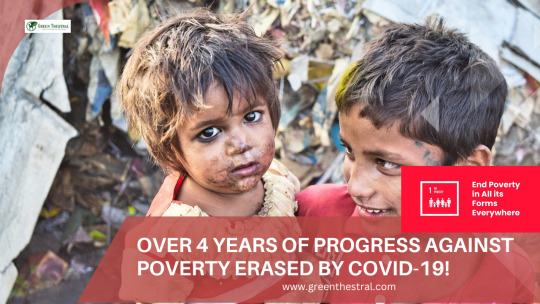
The year 2020 will forever be remembered as a time of unparalleled upheaval, as the COVID-19 pandemic took the world by storm, leaving behind a trail of destruction in its wake. Beyond the tragic loss of lives, the pandemic also unleashed a devastating blow on the global economy and disrupted social systems, derailing the remarkable progress made against poverty over the past four years. The journey towards eradicating poverty that had shown promising strides now stands overshadowed by a daunting reality. This article delves into the impact of COVID-19 on poverty eradication efforts, examining the setbacks, challenges, and potential pathways to recovery.
The Pre-COVID Progress
Before the pandemic struck, significant strides had been made in the battle against poverty. Numerous developing countries had reported declining poverty rates, improvements in education, and better access to healthcare. Global organizations like the World Bank and the United Nations were optimistic that we were moving closer to achieving the Sustainable Development Goal of eradicating extreme poverty by 2030.
Governments, NGOs, and philanthropic organizations were working together, implementing targeted interventions to lift millions out of poverty. Investments were being made in education and vocational training, empowering individuals with skills to secure better-paying jobs. Microfinance initiatives provided small loans to entrepreneurs, fostering local economic growth and self-sustainability. Moreover, access to healthcare has improved through the expansion of health facilities and immunization programs.
The Unforeseen Blow of COVID-19
Enter COVID-19, and the world witnessed an unprecedented human and economic crisis. Lockdowns, travel restrictions, and social distancing measures were put in place to curb the spread of the virus, leading to the shutdown of businesses, the loss of jobs, and disruptions in supply chains. The most vulnerable segments of society were hit hardest, plunging many back into poverty.
Informal workers, day laborers, and those in the gig economy were left without job security or access to social safety nets. Women, who had made significant strides in the workforce, faced a disproportionate burden as they juggled work, childcare, and household responsibilities during the lockdowns.
The Toll on Global Poverty
According to the World Bank, the COVID-19 pandemic pushed an estimated 100 million people into extreme poverty in 2020, erasing more than four years of progress against poverty eradication. The setback was particularly severe in Sub-Saharan Africa and South Asia, where poverty rates surged due to the combined impact of health and economic crises.
School closures further exacerbated the situation, with millions of children unable to access education. This could have far-reaching consequences, as education is a crucial pathway to breaking the cycle of poverty. The disruption in education has the potential to create a lost generation of children who are deprived of the knowledge and skills they need to thrive in the future.
The Hidden Toll on Women
COVID-19 also exposed and amplified existing gender inequalities. Women, who often bear the brunt of poverty, found themselves at the frontline of the pandemic response, comprising the majority of healthcare workers and caregivers. Simultaneously, job losses and economic hardships disproportionately affected women, pushing them deeper into poverty.
Moreover, there was a surge in gender-based violence during lockdowns, as victims were confined with their abusers and faced barriers to seeking help. The pandemic further underscored the urgency of addressing gender disparities and promoting women's empowerment as critical components of poverty eradication efforts.
The Struggle for Access to Healthcare
The pandemic highlighted the glaring gaps in healthcare access and infrastructure in many developing countries. Overwhelmed healthcare systems struggled to provide adequate care to COVID-19 patients while maintaining essential health services for other diseases. This left millions without access to basic healthcare and life-saving treatments.
The economic fallout from the pandemic also affected funding for healthcare, diverting resources away from vital health initiatives. Immunization programs suffered, leading to potential outbreaks of preventable diseases that could disproportionately impact vulnerable communities already reeling from the pandemic's effects.
Climate Change and Poverty: A Two-Front Battle
As if battling a global pandemic was not challenging enough, countries also faced the looming threat of climate change. Climate-related disasters such as hurricanes, floods, and wildfires increased in frequency and intensity, exacerbating poverty and displacing communities.
Vulnerable populations living in low-lying coastal regions or arid areas faced the brunt of climate change impacts, losing their homes and livelihoods. The dual challenges of climate change and poverty necessitate urgent and integrated efforts to build resilience and reduce vulnerability.
A Call for a Resilient Recovery
While the road to recovery may seem daunting, there are glimmers of hope on the horizon. Governments, international organizations, and civil society have an opportunity to build back better, ensuring that the recovery from the pandemic is sustainable, inclusive, and resilient.
Investments in healthcare and social safety nets are crucial to ensure that vulnerable communities are better prepared to weather future crises. Rebuilding livelihoods through job creation, vocational training, and microfinance initiatives can empower individuals to lift themselves out of poverty.
Harnessing Technology and Innovation
The pandemic accelerated the adoption of digital technologies, showcasing their potential to bridge gaps in education, healthcare, and financial services. Leveraging technology and innovation can play a pivotal role in reaching marginalized populations and addressing systemic inequalities.
Mobile banking, telemedicine, and e-learning platforms can enhance access to essential services, particularly in remote areas. Moreover, investments in renewable energy and sustainable infrastructure can create jobs while combating climate change, fostering a greener and more inclusive economy.
Global Solidarity for Lasting Change
COVID-19 has underscored the interdependence of nations and the need for global solidarity in addressing poverty and other global challenges. It is essential for developed nations to support developing countries through financial aid, debt relief, and technology transfer to ensure an equitable recovery.
By collaborating on research, sharing best practices, and working towards common goals, the world can emerge from this crisis stronger and more prepared to confront future challenges. International cooperation is key to ensuring that the progress against poverty does not suffer further setbacks in the face of unforeseen adversities.
Conclusion
The impact of COVID-19 on poverty eradication has been nothing short of devastating. More than four years of hard-won progress has been erased, leaving millions trapped in the cycle of poverty once again. However, the pandemic has also shown the resilience of individuals, communities, and nations in the face of adversity.
As we navigate the uncertain terrain ahead, it is crucial for us to learn from the lessons of the pandemic and forge a path towards a more inclusive and sustainable future. By addressing the underlying issues of poverty, inequality, and climate change, we can build a world that is better equipped to withstand and overcome future challenges, ensuring that the progress against poverty is not only restored but accelerated. Together, we can rise from the ashes of this crisis and create a world where no one is left behind.
What's In It For Me? (WIIFM)
In this eye-opening blog article, you'll discover the harsh reality of the COVID-19 pandemic's impact on poverty eradication efforts. Learn about the setbacks, challenges, and potential pathways to recovery, while gaining insights into the global response and initiatives being taken to build a resilient future. Understand how this crisis affects you, your community, and the world at large, and find inspiration in the call for solidarity and global cooperation. Join us on this journey as we delve into the importance of collective action in ensuring progress against poverty is not only restored but accelerated, creating a world where no one is left behind.
Call to Action (CTA)
Let's stand together and take action against the devastating impact of COVID-19 on poverty eradication. Share this article with your friends, family, and social networks to spread awareness about the challenges faced by vulnerable communities. Engage in discussions, explore ways to support local and global initiatives, and volunteer your time or resources to help those in need. Together, we can make a difference and work towards creating a more equitable and sustainable world for everyone.
Blog Excerpt
The COVID-19 pandemic has dealt a severe blow to the progress made against poverty in recent years. The article sheds light on the unprecedented challenges faced by marginalized communities, the toll on global economies, and the alarming rise in extreme poverty. However, amidst the grim reality, glimmers of hope emerge as we explore potential pathways to recovery. From harnessing technology and innovation to fostering global solidarity, there are ways we can build back better and ensure a more inclusive and resilient future for all.
Meta description in 320 characters to appear in the Google Search Engine
Discover the devastating impact of COVID-19 on poverty eradication efforts. Uncover challenges, pathways to recovery, and calls for global solidarity in this enlightening blog article.
#COVID-19's impact on poverty eradication#Progress against poverty during COVID-19#Global poverty setbacks due to pandemic#Resilience in the face of poverty challenges#Building back better after COVID-19#Poverty eradication and the pandemic#COVID-19's toll on vulnerable communities#Challenges in poverty eradication post-COVID#Pathways to recover from COVID-19's impact#Addressing poverty in a pandemic-hit world#Rebuilding livelihoods after COVID-19#Role of technology in poverty eradication#COVID-19's lasting impact on the poor#Global cooperation for poverty alleviation#Women and poverty during the pandemic#Education setbacks amidst COVID-19#Climate change and poverty during COVID-19#Inequality and COVID-19's toll on poverty#Health crisis worsens poverty#Support for developing nations post-COVID#Opportunities for poverty eradication post-pandemic#Lessons from COVID-19 for poverty efforts#Social safety nets and poverty recovery#Microfinance impact during the pandemic#Sustainable development goals post-COVID#COVID-19's impact on vulnerable children#Gender disparities in pandemic poverty#Addressing the poverty pandemic nexus#A resilient future against poverty and COVID-19#Taking action against poverty post-COVID
0 notes
Text
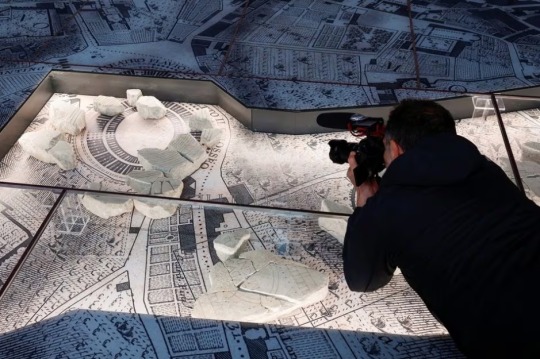

Ancient Monumental Marble Map of Rome on Display After 100 Years
A marble map of ancient Rome, that hasn't been put on public view for almost 100 years, is getting its very own museum within sight of the Colosseum.
The Museum of the Forma Urbis, enclosed within a new archaeological park on one of Rome's famous seven hills opens on Friday -- the latest offering from a city that is eager to broaden its attraction for growing hordes of tourists, according to Reuters.
"This is a beautiful day. We are opening an archaeological park in an extraordinary part of the city and a new museum showcasing a masterpiece which has not been visible for about a century," said Rome Mayor Roberto Gualtieri.
"We want a city where the museums and the streets are linked, and where people, while walking around, can fully appreciate and enjoy the beauty, but also better understand how our city has been transformed."





The Forma Urbis was a monumental, highly detailed marble map of ancient Rome carved during the reign of the Emperor Septimius Severus between 203 and 211 AD, engraved onto 150 separate slabs and measuring 18 by 13 metres (60 by 43 feet).
It was displayed on a wall in the ancient city, but over the centuries it gradually disintegrated, with locals using some slabs for new buildings.
During excavations in 1562, fragments were recovered and scholars estimate around 10% of the whole has survived, including sections showing the Colosseum and Circus Maximus, as well as floor plans of baths, temples and private houses.
The huge carving has proved a valuable resource for understanding the layout of ancient Rome, but all the remaining pieces have not been shown together since 1924.
In its new, innovative setting, the fragments have been laid out on a reproduction of a famous map of Rome created in the 18th century by the surveyor Giovanni Battista Nolli, who is credited with making the first accurate street plan of Rome.
The marble chunks lie on top of the Nolli map, showing their relation to the developing Renaissance city.

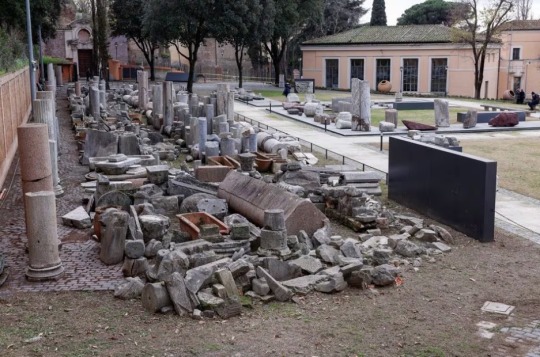


Outside the museum, in the open-air park on the side of the Caelian Hill, archaeologists have out laid out walkways lined with ancient Roman grave markers and marble columns found in excavations around the city in recent decades.
"The Caelian Hill, one of the seven hills of ancient Rome, has remained in the shadows, unknown and inaccessible for a very long time. Today, we are finally giving it back to the city," said Claudio Parisi Presicce, who oversees Rome's cultural heritage.
"The hill has a special importance because it is what unites the monumental area of the Imperial Forums, the Roman forum, the Colosseum and the area of the Appia Antica," he said.
The 5-million-euro ($5.5 million) project is part of a broader refurbishment of Rome, which has seen a tourism boom since the end of the COVID-19 pandemic and is expected to be submerged by visitors in the 2025 Roman Catholic Holy Year.

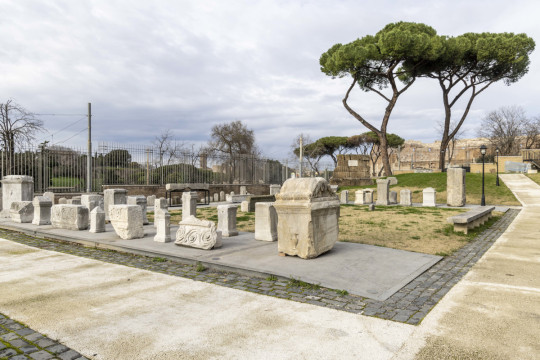



#Ancient Monumental Marble Map of Rome on Display After 100 Years#The Museum of the Forma Urbis#The Forma Urbis#Emperor Septimius Severus#ancient artifacts#archeology#archeolgst#history#history news#ancient history#ancient culture#ancient civilizations#ancient rome#roman history#roman empire#roman emperor#roman art
164 notes
·
View notes
Text


Authors: David Graeber, Nika Dubrovsky Topics: COVID-19, health care
Or more precisely, we are imagining a sane world after the virus, one where, instead of just trying to put things back the way they were, we act on what we’ve learned. For instance, a huge proportion of office work, especially administrative, managerial, marketing, legal, finance, consultancy and the like have shown themselves to be pure bullshit. If they disappeared, it would either make no difference or the world might even be a slightly better place. The proof is that during the crisis, most of them did disappear and the world kept spinning. So imagine for a moment we are sane and don’t just go back to pretending there’s some reason to have all these people bluffing to make us think they work all day but instead got rid of the bullshit jobs. Well, one question would be: what would we do with all the buildings where they used to work? Obviously, those actually useful workers who kept us alive and cared for during the epidemic – doctors, nurses, cleaners, couriers, electricians, farmers – don’t need giant glass buildings to make them feel important. Some can be blown up. This will be good because it means there will be less energy use to keep them heated, cooled and so forth, which will reduce carbon emissions. But surely we wouldn’t want to blow up all of them.
After the French and Russian revolutions, the royal palaces were turned into state museums. That might point to one sane way to use them. But there’s also a crazy way: a return to “normalcy”. The model for this might be what happened after the large-scale deindustrialization of western metropolises, when former factories and warehouses were turned into private art centers, offices and condominiums for the kind of people who worked in them. Many find it hard to imagine this won’t happen again, if there is rapid de-bullshitization of work, but no real change to the financial system, or structures of wealth and power more generally. Empty offices would be bought up by investors, who would turn them into expensive condominiums or private art spaces whose presence will give the real estate additional market value. The only alternative usually put on the table is if the state takes over everything, either in the form of state socialism (which is basically just state-monopoly capitalism) or its right-wing “national-socialist” variant (in whatever updated 21st century form).
In that future, those empty offices not used to house bureaucrats or secret police will be turned into state museums: conservative, elitist institutions whose general ambiance balances somewhere between that of a cemetery and that of a bank. We would like to insist on the possibility – perhaps not the likelihood, but at least the possibility – of sanity. Imagine that the experience of lockdown and economic collapse actually allows us to see the world as it really is and we acknowledge that what’s referred to as “an economy” is simply the way we collectively keep each other alive, provision each other with the things we need and generally take care of one another. Say we also reject the notion of social control.
Prisons, after all, provide food, shelter and even basic medical care. Still, they are not “caring” institutions. What they provide is not care because real care is directed not just at supplying material needs, not even just to allow others to grow and thrive, but also, to maintain or enhance their freedom. Imagine we jettison the idea of production and consumption being the sole purpose of economic life and substitute care and freedom. What would we do with the buildings then?
In a world built around care and solidarity, much of this vast and absurd office space would indeed be blown up, but others could be turned into free city universities, social centers and hotels for those in need of shelter. We could call them ‘Museums of Care’ — precisely because they are spaces that do not celebrate production of any sort but rather provide the space and means for the creation of social relationships and the imagining of entirely new forms of social relations.
#covid#work from home#work#health care#us healthcare#us politics#healthcare#medicine#science#David Graeber#Nika Dubrovsky#anarchism#freedom#workers solidarity#workers rights#anarchy#anarchist society#practical anarchy#COVID-19#practical anarchism#resistance#autonomy#revolution#communism#anti capitalist#anti capitalism#late stage capitalism#daily posts#libraries#leftism
48 notes
·
View notes
Text
It was a time of fear and chaos four years ago.
The death count was mounting as COVID-19 spread. Financial markets were panicked. Oil prices briefly went negative. The Federal Reserve slashed its benchmark interest rates to combat the sudden recession. And the U.S. government went on a historic borrowing spree—adding trillions to the national debt—to keep families and businesses afloat.
But as Donald Trump recalled that moment at a recent rally, the former president exuded pride.
“We had the greatest economy in history,” the Republican told his Wisconsin audience. “The 30-year mortgage rate was at a record low, the lowest ever recorded ... 2.65%, that’s what your mortgage rates were.”
The question of who can best steer the U.S. economy could be a deciding factor in who wins November’s presidential election. While an April Gallup poll found that Americans were most likely to say that immigration is the country's top problem, the economy in general and inflation were also high on the list.
Trump may have an edge over President Joe Biden on key economic concerns, according to an April poll by The Associated Press-NORC Center for Public Affairs. The survey found that Americans were more likely to say that as president, Trump helped the country with job creation and cost of living. Nearly six in 10 Americans said that Biden’s presidency hurt the country on the cost of living.
But the economic numbers expose a far more complicated reality during Trump's time in the White House. His tax cuts never delivered the promised growth. His budget deficits surged and then stayed relatively high under Biden. His tariffs and trade deals never brought back all of the lost factory jobs.
And there was the pandemic, an event that caused historic job losses for which Trump accepts no responsibility as well as low inflation—for which Trump takes full credit.
If anything, the economy during Trump's presidency never lived up to his own hype.
DECENT (NOT EXCEPTIONAL) GROWTH
Trump assured the public in 2017 that the U.S. economy with his tax cuts would grow at “3%,” but he added, “I think it could go to 4, 5, and maybe even 6%, ultimately.”
If the 2020 pandemic is excluded, growth after inflation averaged 2.67% under Trump, according to figures from the Bureau of Economic Analysis. Include the pandemic-induced recession and that average drops to an anemic 1.45%.
By contrast, growth during the second term of then-President Barack Obama averaged 2.33%. So far under Biden, annual growth is averaging 3.4%.
MORE GOVERNMENT DEBT
Trump also assured the public that his tax cuts would pay for themselves because of stronger growth. The cuts were broad but disproportionately favored corporations and those with extreme wealth.
The tax cuts signed into law in 2017 never fulfilled Trump's promises on deficit reduction.
According to the Office of Management and Budget, the deficit worsened to $779 billion in 2018. The Congressional Budget Office had forecasted a deficit of $563 billion before the tax cuts, meaning the tax cuts increased borrowing by $216 billion that first year. In 2019, the deficit rose to $984 billion, nearly $300 billion more than what the CBO had forecast.
Then the pandemic happened and with a flurry of government aid, the resulting deficit topped $3.1 trillion. That borrowing enabled the government to make direct payments to individuals and small businesses as the economy was in lockdown, often increasing bank accounts and making many feel better off even though the economy was in a recession.
Deficits have also run high under Biden, as he signed into law a third round of pandemic aid and other initiatives to address climate change, build infrastructure and invest in U.S. manufacturing. His budget deficits: $2.8 trillion (2021), $1.38 trillion (2022), and $1.7 trillion (2023).
The CBO estimated in a report issued Wednesday that the extension of parts of Trump’s tax cuts set to expire after 2025 would add another $4.6 trillion to the national debt through the year 2034.
LOW INFLATION (BUT NOT ALWAYS FOR GOOD REASONS)
Inflation was much lower under Trump, never topping an annual rate of 2.4%, according to the Bureau of Labor Statistics. The annual rate reached as high as 8% in 2022 under Biden and is currently at 3.4%.
There were three big reasons why inflation was low during Trump's presidency: the legacy of the 2008 financial crisis, Federal Reserve actions, and the coronavirus pandemic.
Trump entered the White House with inflation already low, largely because of the slow recovery from the Great Recession, when financial markets collapsed and millions of people lost their homes to foreclosure.
The inflation rate barely averaged more than 1% during Obama's second term as the Fed struggled to push up growth. Still, the economy was expanding without overheating.
But in the first three years of Trump's presidency, inflation averaged 2.1%, roughly close to the Fed's target. Still, the Fed began to hike its own benchmark rate to keep inflation low at the central bank's own 2% target. Trump repeatedly criticized the Fed because he wanted to juice growth despite the risks of higher prices.
Then the pandemic hit.
Inflation sank and the Fed slashed rates to sustain the economy during lockdowns.
When Trump celebrates historically low mortgage rates, he's doing so because the economy was weakened by the pandemic. Similarly, gasoline prices fell below an average of $2 a gallon because no one was driving in April 2020 as the pandemic spread.
FEWER JOBS
The United States lost 2.7 million jobs during Trump's presidency, according to the Bureau of Labor Statistics. If the pandemic months are excluded, he added 6.7 million jobs.
By contrast, 15.4 million jobs were added during Biden's presidency. That's 5.1 million more jobs than what the CBO forecasted he would add before his coronavirus relief and other policies became law—a sign of how much he boosted the labor market.
Both candidates have repeatedly promised to bring back factory jobs. Between 2017 and the middle of 2019, Trump added 461,000 manufacturing jobs. But the gains began to stall and then turned into layoffs during the pandemic, with the Republican posting a loss of 178,000 jobs.
So far, the U.S. economy has added 773,000 manufacturing jobs during Biden's presidency.
Campaign Action
22 notes
·
View notes
Text

David Rowe
* * * *
Trump's Project 2025 Nominees
November 23, 2024
Robert B. Hubbell
Nov 23, 2024
Trump released a flurry of nominations on Friday evening—apparently hoping that Americans would not notice that several of the nominees share a connection to Project 2025 and Fox “news” programs.
The most significant nomination is Russell T. Vought to lead the Office of Management and Budget (OMB). OMB is part of the Executive Office of the President and is charged with (a) creating the budget and (b) oversight of federal agencies to ensure compliance with the president’s policies and spending authority. Although the job sounds like it is “in the weeds,” OMB is where the hard work of implementing the president’s policies takes place.
Russel T. Vought served as acting director of OMB for two years during the first Trump administration. That’s good and reassuring in the sense that one of the most important jobs in Washington will be filled with someone actually qualified to perform the job.
But Vought is also an “architect” of Project 2025. Per the NYTimes,
Mr. Vought was a leading figure in Project 2025, the effort by conservative organizations to build a governing blueprint for Mr. Trump should he take office once again. Mr. Trump tried to distance himself from the effort during his campaign, but he has put forward people with ties to the project for his administration since the election.
Mr. Vought’s role in Project 2025 was to oversee executive orders and other unilateral actions that Mr. Trump could take during his first six months in office, with the goal of tearing down and rebuilding executive branch institutions in a way that would enhance presidential power.
To the surprise of no one, Trump's claim during the election that he knew nothing about Project 2025 was a lie. There is almost no one better positioned to advocate for the goals of Project 2025 than Vought—both because of his key role in drafting the agenda and because of the powerful position he will assume at OMB.
Vought has been a vocal advocate for eliminating the “independence” of certain federal agencies—such as the Federal Trade Commission, the Securities and Exchange Commission, and the Federal Reserve.
Removing the independence of those regulatory agencies would put the president in the position to reward friends and punish enemies through the power of federal agencies.
For example, the SEC has charged Elon Musk with violating securities laws in his takeover of Twitter. Under the current operating protocols for the SEC, the president would not interfere in decisions by the SEC to initiate prosecutions or enforcement actions. But if Trump is successful in eliminating the independence of the SEC, Trump could order the SEC commissioners to drop the case against Musk.
Other nominations that deserve scrutiny include:
Sebastian Gorka as the senior director for counterterrorism. Gorka was forced out of the White House during Trump's first administration because he frequently clashed with senior intelligence leaders who saw Gorka as an ideologue with little real-world experience.
Marty Makary, has been nominated to lead the FDA. Per The Hill, Makary is a Johns Hopkins’s oncology surgeon who espoused contrarian views about the response to the COVID-19 pandemic. In early 2021, Makary published an op-ed in the WSJ asserting that “herd immunity” would end the pandemic by April 2021. In fact, cases of Covid in the US increased substantially after Makary’s op-ed, with nearly half of the total deaths occurring after his claim that “herd immunity” would end the pandemic.
Scott Bessent has been nominated as Secretary of Treasury. Bessent is a hedge fund manager and may have the experience to serve in the position. However, he is a deficit hawk who also wants to extend the costly Trump tax cuts from 2017. Per HuffPo,
Even as he pushes to lower the national debt by stopping spending, Bessent has backed extending provisions of the Tax Cuts and Jobs Act of 2017, which Trump signed into law in his first year in office. Estimates from different economic analyses of the costs of the various tax cuts range between nearly $6 trillion and $10 trillion over 10 years. Nearly all of the law’s provisions are set to expire at the end of 2025.
To put a finer point on Bessent’s nomination, extending tax cuts for the wealthy while reducing deficits likely means that deficit reduction will be borne by the middle class and working poor.
And to put an even finer point on the nominations—and to paraphrase Bill Clinton’s campaign motto— “It’s Project 2025, stupid!” We were right all along—and Trump was lying all along. Somehow that storyline is missing from the media on Friday . . . .
Trump voters suddenly feel better about the economy
Readers send me dozens of copies of articles each day that explain “why Democrats lost the 2024 election.” Most of the analyses are subterfuges for attacking either (a) the progressive wing of the party for being too liberal or (b) the centrist wing of the party for not being liberal enough.
I will say again that the last thing Democrats should be doing at this moment is assigning blame for the loss. One op-ed published in legacy media today effectively advocated abandoning support for unions and LGBTQ people. That is both wrong and a horrible idea. We can’t change who we are as a party to chase elusive Trump voters who are likely not being honest about their reasons for supporting Trump.
Most of the analysts who are scolding Democrats start with the patently false notion that Democrats have “abandoned the working class.” They then pile on with the corollary that Democrats lost because they failed to address concerns about the economy and inflation.
The commentators assume that exit polling accurately reflects why voters supported Trump. There is good reason to believe that Trump supporters are offering post-facto rationalizations to justify their support for Trump's divisive and hateful platform.
A new survey suggests that Trump supporters weren’t being honest about their reasons for supporting Trump. See MSN, Poll: Republicans reverse views on economy and election fraud after Trump’s win; much smaller shifts among Democrats
Per the article, a significant portion of Republicans suddenly changed their mind about how good they felt about the economy after Trump won. Per MSN,
The survey of 1,612 U.S. adults, which was conducted from Nov. 14 to Nov. 18, found that fewer than half of Republicans (48%) now say the economy is getting worse. But immediately before the Nov. 5 election, nearly three-quarters of Republicans (74%) said the economy was going downhill.
That’s a sudden 26-point shift.
A 26-point shift is significant. To state the obvious, the economy did not make sudden improvements in the ten days after the election. Rather, when complaining about the economy no longer justifies voting for Trump, more Republicans acknowledge that the economy is doing well.
So, it is a mistake to base “What went wrong?” analyses on the unquestioning acceptance of what voters are saying in exit polls. It is also a mistake to talk about “what went wrong” by ignoring the fact that Trump's campaign platform had three culture-war pillars: racism, sexism, and white supremacy.
Those policy pillars are manifesting themselves in Trump's nominees for senior positions in his administration. To publish an analysis of “why Democrats lost” while ignoring Trump's campaign themes is a recipe for delusion.
But I digress. We must use caution when publishing, reading, or sharing analyses about why Democrats lost. And no part of that analysis should be used to blame or banish any part of the Democratic coalition. We must stick together to increase our chances of victory in the short term.
Concluding Thoughts
I will hold a Substack Livestream on Saturday morning, November 23 at 8:00 a.m. Pacific / 11:00 a.m. Eastern. If you have the Substack app on your phone, you will receive a notice when I go live. You will not receive a link in advance. To download the Substack app, go to these links: Substack on the App Store and Substack - Apps on Google Play.
I was chatting with a reader about their feelings of exhaustion “in the face of four more years of Trump.” I understand those feelings but believe we should be thinking about resisting Trump in a series of discrete, shorter time periods. Thinking about our resistance in “phases” can help us be more strategic and relieve artificial pressure from our shoulders.
Between today and the Inauguration (January 20, 2025), Joe Biden is still president and can take steps to appoint judges and implement policies in a way that will delay or defeat efforts to undo Biden’s accomplishments.
After the Inauguration, Trump and his enablers will face the daunting task of embedding themselves in a massive federal government while they undertake their promised deportation of 10 million immigrants. That period will last eighteen months and will be a daily challenge. But then, the 2026 midterms will get underway. Trump's congressional supporters will be concerned about re-election—a concern that may cause them to re-think their loyalty to Trump. Our leverage and messaging opportunities will increase.
In the last two years of his presidency, Trump will be a lame duck. The internal GOP struggle to replace Trump will be in full swing and Trump will be fighting with his party as much as he will be fighting with Democrats.
Here’s my point: While we cannot relent, the period of maximal effort will be the next twenty months (Dec and January, plus eighteen months before the 2026 midterms). What happens after that depends on whether Democrats retake the House in 2026.
So, rather than thinking about Trump's tenure as a four-year unbroken battle, break up the periods of resistance into smaller periods. Doing so is realistic, smart, and healthy. We are in this battle for the long term. We can’t burn ourselves out with outrage and freneticism. We have a job to do. Let’s do it in a measured but passionate way. That will increase our chances for success.
[Robert B. Hubbell Newsletter]
#David Rowe#political cartoons#Zelensky#war in ukraine#Robert B. Hubbell Newsletter#Robert b. Hubbell#cabinet appointments#Project 2025
3 notes
·
View notes
Text
CW: COVID-19
Potent section from "Queer as in fuck you" written by anonymous and published by Sour Queer Press which resonates strongly:
What is fascinating to me is that queer community focuses so much on consent. It’s truly mind blowing to see people go back to dance and house parties, large and small events, unmasked. Poetry readings and community care events, all with either no or sloppy precautions that make no sense (fyi, if you require masks you better have a way of making sure people are wearing them or else you are still excluding disabled folks). The irony to me of a group that cares so much about community and being trauma-informed contributing to the spread of a disabling virus is too much. And there aren’t really words for seeing person after person let you down. All in the name of something we (queer militants) have a history of fighting: assimilation. Eugenics in the name of mental health. As if queer disabled people aren’t some of the most creative people I’ve met. And I’ve been so disappointed in the queer community that I forget: so much of the invisible (no thanks to you) queer community does care about covid. It’s the aesthetic, back-to-normal, eugenicist, assimilating queers that don’t care. And it dawned on me: y’all aren’t fucking queer. Your values align with every white woman you make fun of for being fragile, attached, sensitive. Queerness is more than a denim vest and who you fuck or don’t. Queerness means fighting for the very values “queer” (from this point on, y’all queer fuckers that don’t take covid seriously are getting a “”) people are abandoning. We lost an entire generation to AIDS, and the nightmare is a generation of “queers” who are happy to forget how hard we’ve fought for each other. It seems like people think queerness is more about how you look and not about how we move. So do me a favor, stop calling yourself queer. You don’t deserve the label. Go hang out with the boring ass cis hets who go to brunch on the weekend and go to that new restaurant for Wednesday night dinners. I’m sure they’ll appreciate your added spunk and since that’s what you’re assimilating into anyways, just get to it and stop pretending. In the meantime, we’ve been building community, whoever has a filter lugging it back and forth to houses, taking whatever money we can spend on masks for ourselves and each other, watching movies and making art. But I’m gonna be honest, that’s not good enough for me. That’s what you want anyways, isn’t it? For us to isolate in our communities. No, I think I’m going to start calling in our AIDS ancestors and bringing dead bodies and ashes to your doorstep.
Print editon [PDF, 2.6MB, archived] | Read edition [PDF, 14.7MB, archived] | Audio [MP3, 72.5MB, archived]
You can follow Queer Sour Press on their blog or on Mastodon or email them here: [email protected].
Fucking depresses me no one is cautious during deaf events or pride events even though deaf people are more disproportionately likely to be disabled; and queer people are also disproportionately more likely to be disabled. Even more infuriating when one of the reasons why we don't have many queer elders over the age of 40 was because of the AIDS epidemic and we have had campaigns like safer sex awareness and consent as well as distributing harm reduction supplies such as free condoms.
#Sour Queers Press#Antidote Zine#zines#Minneapolis#We Keep Us Safe#COVID denialism#mutual aid#against the fascist creep#queer assimilation#queer liberation#queer zines#necropolitics#eugenics
8 notes
·
View notes
Text
BEHIND THE CAMPAIGN: LOUIS TOMLINSON
MUSICALLY | 19 APRIL 2023
Former One Direction star Louis Tomlinson released his debut album in 2020 through Sony but moved to BMG for his second album, Faith In The Future, in November 2022. Lisa Wilkinson, director of UK marketing (new recordings) at BMG, explains how they looked to reposition him in the market, what learnings were coming from his live success as well as his own festival, why his merchandise strategy directly informed his multi-formatted record release strategy, how they were able to build him without mass radio support, where a wider male audience was targeted this time round, why Twitter remains his most powerful social media platform and how a highly vocal and engaged fanbase was nurtured further and directly involved in the campaign.
Lisa Wilkinson, director of UK marketing (new recordings) at BMG, explains how they looked to reposition him in the market, what learnings were coming from his live success as well as his own festival, and more.
[The article will be broken into sections, linked below.]
1. Coming to BMG for his second solo album
2. The centrality of merchandise
3. The radio conundrum
4. Targeting a male audience
5. Building his songwriting profile
6. Targeting the press
7. Boosting the digital strategy
8. QR code and interactive community map at his Away From Home festival
9. Twitter as his main platform and setting him up on TikTok
10. Chart battle with Bruce Springsteen and the power of in-stores
11. Stationhead and Tim’s Twitter Listening Party
12. Fan-made Spotify Canvases
13. Documentary and the next steps
☆彡
1. COMING TO BMG FOR HIS SECOND SOLO ALBUM
This is his first album with BMG. His debut album, Walls in 2020, was with Syco Music [via Sony]. That was off the back of X Factor with Simon Cowell.
He had done a couple of more commercial singles – one with Steve Aoki [‘Just Hold On’] and one with Bebe Rexha and Digital Farm Animals [‘Back To You’]. They were really successful streaming singles, but that’s not who Louis is. For the boys in One Direction, the ones that have been successful and the songs that have been successful are the ones that have stayed super pop and commercial. Louis did that but it’s just not who he is.
I think he felt, in that structure, that he just wasn’t getting the support to be who he wanted to be. That’s exactly why people come to us. It’s an artist services deal and we’re there to support you and advise you.
You can see from his live business and his merchandise business – and every other thing that Louis does – that there is an incredible fanbase there for him.
When they [Syco] released Walls, they achieved 14,000 units in week one and got to number 4 in Q1 in January 2020. We thought that just didn’t feel reflective of what was happening [around him].

We went and saw him at various venues on his world tour. We went to New York and saw those two shows and we went to Italy and watched his Milan stadium show in front of 30,000 people.
You’re looking and you’re thinking, “Those numbers don’t make any sense. How on Earth did you fumble that?” We were confident that we could do better than that.
He had a signing dinner in October 2021 and then his world tour started in February 2000, which was the delayed tour [due to the pandemic]. It went all the way through to September, pretty much nonstop.
They sold half a million tickets that year. All the while he’s on tour, he’s still making the album.
‘Out Of My System’ was released as a DSP-focused track before the album. It’s the rockiest and heaviest track on the album. He came straight off stage, went into a vocal booth off the side of the stage [to record it]. Because of the energy, he was so fired up. It was a difficult process because it was creating an album on the road.
He wanted to make an album for live. It was a totally different experience for him. Covid hit just a few months after Walls dropped so the tour was out of the question.
Before we started working on the album campaign, he did a show at Crystal Palace Bowl, which was the first incarnation of his Away From Home festival that he’s created and curated, which is for up-and-coming indie bands.
He gave away 8,000 tickets in August 2021 when we could start doing outdoor things again. I was there and was thinking, “There’s something big going on here.” The fans were so committed and dedicated.
Considering this is someone who hasn’t had real radio support or is seen in celebrity magazines or on social posts, this is a huge phenomenon.
That continued into the tour.
35 notes
·
View notes
Text
No superlative was spared when construction of the British Embassy to the United States was completed in 1930. It was a “home fit for a king,” as the Washington Post put it, designed to echo the intimidating elegance of an English country manor.
If the original embassy, which now serves as the ambassador’s residence, captures the sort of high-glamor diplomacy that Netflix would approve of, then the chancellery building next door—all concrete colonnades and flimsy windows—evokes a British state school from the 1960s.
As I wait in the lobby for my escort to meet with Ambassador Karen Pierce, two young British soldiers in uniform mill around the room. “I thought it would be more glamorous,” I hear one of them say to the other. Then I’m whisked through a corridor to the ambassador’s office, lined with portraits of her predecessors dating back to the late 18th century. All of them are men.
In the high stakes world of diplomacy, a Washington posting is the equivalent of competing in the Olympic Games: reserved for only the most limber of envoys. The British ambassador to the United States is the equivalent rank to a four-star general, the only one of its kind in the British foreign service. Since taking up the position in early 2020 during the outbreak of the COVID-19 pandemic, Pierce has served as a steady hand in Washington amid a churn of prime ministers, the Russian invasion of Ukraine, and the death of the U.K’s longest-reigning monarch, Queen Elizabeth II.
The ambassador’s airy study is dotted with artifacts gathered during Pierce’s 41 years with the foreign office. A vast collection of fridge magnets, more than 20 years in the making, stretches several feet up the wall. “The tackier the better,” she says.
A self-professed “total girl” with a passion for military hardware, Pierce has perched a model of a fighter jet and a limited edition British Barbie in a trench coat behind her desk.
Affable and fiercely intelligent, Pierce is at ease around journalists. (A briefing book diligently prepared by her staff goes untouched during our conversation.) We met in October, shortly after Hamas’s rampage in southern Israel, which shattered assumptions about the Middle East and plunged the region into war once again.
After a disorienting few years marked by the pandemic and the start of Russia’s full-scale invasion of Ukraine, it’s difficult to discern whether the world is indeed becoming a more volatile place, as it often seems—or whether the ubiquity of smartphones and social media has amplified the sense of urgency. If anyone would know the answer, it’s Pierce.
“I do think there’s something different about this first quarter of the 21st century because of the nature of the problems,” Pierce says. The “big global problems,” as she puts it—climate change, migration, and global public health—were always going to be there. But they have been exacerbated, she says, by wars and the pandemic, while the international community’s response is increasingly complicated by the rapid pace of technological change. Not to mention Russia’s and China’s hopes of flipping the global chessboard in its entirety. “When you put all that together, that’s a lot to wade through,” she concedes.
Still, moments of upheaval such as this one are what define a career in diplomacy. “They’re kind of what you join the foreign service to be involved in, which sounds a bit gruesome,” Pierce says. “I wanted to have a part, however small, in the management of international affairs.”
Pierce has had a hand in shaping the United Kingdom’s response to some of the biggest foreign-policy crises of recent decades, from negotiating peace terms in the Balkans, to the reconstruction of Afghanistan’s economy, to helping marshal a trans-Atlantic response to Russia’s invasion of Ukraine.
Statecraft involves delicate finesse. It also requires stamina, which must be why Pierce often speaks about diplomacy in sporting terms; it is, she says, a “contact sport.”
Pierce arrived in New York City as the British ambassador to the United Nations in 2018, shortly after Russian security agents poisoned a former spy, Sergei Skripal, on British soil. It fell to Pierce to confront the Russians at the Security Council, where she developed a reputation for her gladiatorial sparring matches with her Russian counterpart, Vasily Nebenzya.
In a particularly memorable exchange, Nebenzya likened the accusations leveled against Moscow to the trial scene in the book Alice in Wonderland, during which the Queen of Hearts demands that the sentence be handed down before the verdict. Pierce fired back with her own quote from the Lewis Carroll novel: “There is another very good quote from Alice in Wonderland, which is ‘sometimes I’ve believed as many as six impossible things before breakfast,’ so I think that’s the quote that suits my Russian colleague best.”
“All the adrenaline comes, and I don’t like being beaten,” she says briskly of these high stakes interactions. “I don’t do sports, but this is the equivalent of running.”
Pierce has negotiated with Russian diplomats for decades, dating back to the waning days of the Cold War. Before the invasion of Ukraine, Western diplomats often remarked on the professionalism of the Russian diplomatic corps, describing its members as well-briefed and staunch defenders of their national interests who value a worthy opponent.
“They respect enemies—adversaries—who are tough and stand up to them,” Pierce says.
Despite their acerbic exchanges at the Security Council, Pierce and the Russian ambassador to the United Nations were able to maintain a working relationship on areas of mutual interest, such as the Iran nuclear deal, which former U.S. President Donald Trump withdrew from in 2018. That all changed following the full-scale invasion of Ukraine last year.
“Now the Russians have just decided to double down on being difficult and disruptive, and you can get less and less done,” Pierce says.
Pierce was the first woman to take up the United Kingdom’s seat at the U.N. Security Council, and is likely the first person to do so wearing a feather boa. In hard-nosed diplomacy at the U.N., some countries have been known to use misogyny as a negotiating tactic to try to disorient women diplomats, including by talking over them, dismissing them, or ignoring them altogether.
“A favorite one is not to use women’s [diplomatic] titles,” Pierce says. “But because I like to win, it doesn’t have the effect on me that they want it to have. It has the opposite effect.”
Growing up in Preston, a small city in northwest England, Pierce credits a photograph in the Sunday Times magazine—which showed the U.S. consul to Nice, Eleanor Hicks, stepping aboard an aircraft carrier in southern France—as her inspiration to join the foreign office. It seems to have been as much the aircraft carrier as it was the glamor of the scene that caught the eye of a young Pierce. “I’ve always liked military hardware,” she says.
In her many decades with the foreign office, Pierce has seen the fallout of some of the most unspeakable atrocities, including the massacre of 8,000 Muslim men and boys in Srebrenica during the Bosnian War and Myanmar’s violent purge of hundreds of thousands of Rohingya Muslims.
In spite of it all, she has long described herself as an optimist. “I think if you’re not an optimist, then what are you going to get up and do the next day? You have to believe a way through could be found,” she says. “For me, it’s tied up with problem-solving.”
Even in situations where predictions are dire, Pierce says, “we can do something about it, even if it’s only a small thing. And that might change the dynamic, and then that gives you something to build on.”
7 notes
·
View notes
Text
I noticed that now that school season is coming ever closer, very soon lots of y'all will probably be spending 7 hours for 5 days a week in a very densely populated environment for the first time in a few months because of school, so here's my little mask PSA! Yes, in 2024.
(note: the more reading I did the more this became a GET FREAKIN VACCINATED psa, generally, keep in mind that your risk of getting ANY of the problems described below ((or causing them in others)) is reduced by staying in date with your Covid vax, so keep up with it if that's available to you. The more of y'all that are vaxxed, the more it helps others who can't or won't, and yourselves.)


oh wow doesn't that cute clipart I stole just completely inspire you to read all this
the post is a slight bit longer than intended, but each bullet point is pretty short. the first bit is some facts I read from the CDC after that there's a few tips on masking that I read from various sources and some personal experience.
having been infected with COVID 19 before does not prevent you from getting it again and potentially infecting others, and you may experience different symptoms than before.
having been infected with COVID 19 before definitely will not protect you from an entirely different variant of it.
millions of people have long covid, a chronic disease state potentially affecting multiple organ systems, as a result from being infected with Sars-Cov-2
this link is CDC information on keeping your vaccine up to date
my information above this point is from the CDC, but I definitely implore you to do your own reading instead of just interpreting what I've managed to both comprehend and compile into a rather succinct tumblr blog post.
this one is entirely anecdotal, but the only time I have gotten sick PERIOD in the past four years was when I got COVID from someone I ate lunch with, the only time I am ever in public without a mask is when I'm eating.
Data I found for my state indicates a currently low COVID rate (i checked a few places to be sure), however data is only collected from hospitalizations and presented as ratios in any of the sources I've found, which does not help me get an accurate number of confirmed cases to give y'all. Nevertheless, I recommend looking up what data you can for your own region, I wish you luck that it is more informative.
wearing a mask can prevent the spread of other airborne diseases besides COVID 19, so certain times of the year with an increase in airborne contagious diseases as well as time spent in a building with hundreds of other people whose hygiene and vaccination status are completely out of your control and knowledge are especially important times to wear a mask.
I am sure to keep a few paper masks (still individually wrapped bc they come that way and it keeps 'em clean) in my car in addition to the masks I have inside that I put on before going out, just to make sure I'm never caught off guard. toss it when you're home and replace to leave again. (I think same rules for taking it off for an extended period of time- since the side that would go pressed up against your face is now also exposed to the air)
if you don't drive, leave them in your purse or coat pocket, or keep a fabric one on your keyring bc some of them are made to fold up n do that.
KN95 masks are supposed to be even better at preventing disease spread!! same rules as paper masks.
if nothing else, a set of fabric masks is a one time purchase, however the filters must still be changed out daily(though apparently there are also filters that are washable and reusable, though I've only ever used single-use filters in fabric masks before), the mask itself should also be washed daily, or thrown in the wash each time you come home to be replaced with another in your rotation before you go back out.
personally, I intend to go back to double-layering a paper and 3-layer/fabric duo soon, and I actually learned some new information while reading up to make this post.
even if you can't keep up with every single rule, masking at all is better than not, and keeping up your hygiene helps too! wash with soap when available and keep hand sanitizer on hand, etc.
2 notes
·
View notes
Text
The World Economic Forum Says It Will ‘Accelerate’ Implementation of Globalist Agenda 2030
World leaders will be gathering together later this year to “accelerate the implementation of Agenda 2030,” according to an announcement made by the unaccountable, corporate-led World Economic Forum (WEF) earlier this week.
The United Nations (UN) and the WEF appear frustrated by a lack of progress made towards their ‘Great Reset‘ ideology, alongside Agenda 2030, the socialist, ideological successor to the failed “Millennium Development Goals”.
The WEF – led by German engineer Klaus Schwab, whose father once worked for the Nazi Party apparatus – has said previous efforts to implement their plans “suffered unforeseen setbacks due to the COVID-19 pandemic, major negative impacts of climate change, and the rising cost of food and fuel everywhere due to the conflict in Ukraine.”
Global leaders and representatives are, therefore, being summoned to “strategize” and expedite the progress of what the WEF refers to as “arguably the greatest-ever human endeavor undertaken to create peaceful, just, equal, and sustainable societies.”
The UN Department of Economic and Social Affairs has argued that “[p]ractical solutions that can accelerate progress on the [Sustainable Development Goals of the United Nations (SDGs)] will be urgently needed.”
The seventeen SDGs comprising Agenda 2030 were first compiled in 2015 and were agreed upon by 191 UN Member State governments, though not necessarily their voting publics. These “goals” include laudable aspirations such as “ending poverty”, and eradicating world hunger, amongst more nefarious globalist goals in areas of gender ideology and hard-left socialist economics.
Since Davos 2o21, the WEF has publicly discussed how these goals can be used to achieve the ‘Great Reset,’ which would see ordinary people able to own nothing personally. The WEF claims this will increase happiness in the world.
Civic Participation.
The WEF is focusing on something called “civic participation” to push its plans. They describe this as tackling “economic inequality, gender imbalances, corruption, and environmental degradation.”
“In the quest to build back better,” says the WEF, “civil society is proposing new ways of achieving the SDGs and creating a better post-pandemic world.”
What this will look like is something approximating communism, for a better world is one where “the benefits are evenly spread” because “development must be about freedom from fear and freedom from want.”
This appears to be very much in line with the WEF’s agenda where everyone works together for the “common good,” rather than aiming for profit or reward for hard work rendered or risks taken.
Halfway There.
The WEF plans to assemble world leaders after the highly-anticipated Sustainable Development Goals Progress Report is published by the Secretary-General of the UN, Antonio Guterres, later this year.
The report’s findings will inevitably lay the foundations for the international deliberations. “This year’s report,” insists the WEF, “is especially crucial as we’re nearing the halfway point of Agenda 2030.”
#news#the great reset#nwo#beast system#antichrist#2030#agenda#WEF#UN#EU#klaus schwab#yuval noah harari#middle east#tribulation#religion#money#digital#unicoin#government#control#men#women#children#gay#str8#bi#trans#lgbtq+#2spirit#drag queens
13 notes
·
View notes
Text
Inverse: Even Just a Little of This 1 Overlooked Activity Can Reduce Depression
Spring comes with many little rituals and urges: A deep clean, the shelving of winter jackets, a desire for a salad instead of soup — and an urgent, gnawing need to buy and cultivate as many plants as possible (garden optional). Nature is aligned: The stretch of time right before summer is also the moment when bright, flashy flowers start to bloom and suddenly your lawn needs to be cut. It’s a moment for impulse buying tomato plants, lugging bags of topsoil, and investing in some fresh gardening gloves. Fortunately, this particular ritual does more than beautify our spaces: Gardening has a powerful effect on our mental health.
Consider this: In the first months of the Covid-19 lockdowns, some studies suggest people used their gardens and outdoor spaces 50 to 82 percent more than they did before the lockdown. In one 2022 study, researchers quote a participant who hits on the truth that gardening relieves stress:
“You can’t worry when you are engrossed in weeding, building rock walls, and installing stone paths, or planning and planting a garden,” the participant explained. “Having your hands in the earth connects you directly to nature, which is a welcome companion in my life.”
The findings jibe with a mountain of evidence showing interacting with nature — taking a walk, for example — holds massive health benefits. But gardening is distinct in that it's an active engagement with green spaces. In turn, it offers unique perks. Any garden, big or small, can aid your mental health, but there are certain elements you can include that can enhance the benefits and create a fulfilling space scientifically shown to boost your brain.
Why gardening is good for your brain
What I’m about to state might seem obvious, but science backs it up: Being in nature is good for us. A large body of research shows that time spent in natural settings provides physical and psychological benefits, including (but not limited to) feeling happier, more relaxed, more focused, less anxious, and less fatigued.
Studies on gardening also support the link between enjoying green spaces and better mental health. Gardening can reduce depression and anxiety; it can also improve emotional well-being.
For example, in the study that examined the mental health impact of gardening during the start of the Covid-19 pandemic, people who gardened were less anxious. The paper’s senior author, Rachel Rosenberg Goldstein, says the study also found a connection between spending more time outdoors on weekdays and decreased anxiety scores.
“People who listed exercise as their motivation for gardening have less anxiety, suggesting that the physical activity involved in gardening might impact mental health,” explains Goldstein, who is an assistant professor at the University of Maryland. She is also leading a project examining how gardening can address mental health challenges and food insecurity.
Naomi Sachs, an assistant professor at the University of Maryland and the founding director of the nonprofit Therapeutic Landscapes Network, adds that studies suggest “green exercise” — exercise performed in nature — even “benefits people more than the equivalent amount of exercise indoors.”
How to garden for your mental health
Gardening is good but gardening with others can be even better. Getty Images
Gardening is demonstrably helpful for the mind and body, and there are certain actions that can enhance the experience. These include:
Gardening with others
In a recent study published in the journal The Lancet Planetary Health, researchers found that first-time gardeners found their stress and anxiety lessened after they started tending a plot in a community garden. These new gardeners also got more physical activity than the comparison group, which suggests this outdoor work could play an important role in preventing disease.
Jill Litt is the paper’s senior author and a professor at the University of Colorado, Boulder. She says that it's possible that the social support in the community garden amplifies the general benefits of gardening.
“This social support can activate a series of social processes such as shared learning, reciprocity, and relatedness,” explains Litt. “All these processes tap into intrinsic motivation, which is important for behavior changes that support health and well-being.”
Creating a garden that activates the senses
While what you can grow often depends on where you live, It can be helpful to “have a variety of positive sensory engagement plants — plants that engage all the senses throughout the entire year,” says Sachs.
“For example, lavender is beautiful to look at and smells lovely, and can even taste good when used in baking,” explains Sachs. “It’s also great for pollinators.”
She also recommends serviceberry trees, which come in different varieties that are native to various regions. They are visually striking in different ways throughout the year — in spring they bloom, in fall they often turn orange-red — and their summer berries are edible. They also provide a great habitat for animals.
“The aesthetic experience of gardening is crucial for awakening the senses and creating a sense of wonder,” says Litt.
Other ways of engaging the senses include getting your hands dirty, planting colorful flowers, and making the space inviting to birds — research also suggests the sound of birdsong benefits the brain.
Incorporating other joyful elements
Your garden doesn’t need to be limited to plants and flowers. You can also make space for other activities that destress you.
“Maybe it’s a space for yoga and a separate space for kids or dogs to run around,” Sachs says. “Maybe it’s a space for entertaining, or a hammock for reading a book or taking a nap.”
Litt describes spaces that are hospital to company as “interactional spaces” — areas where people can come together, meditate, and more. You can make way for these sorts of spaces by adding shade and walking paths, she explains.
“These spaces can amplify the social experience by activating social support, promoting shared learning, and fostering friendships,” Litt says.
#Even Just a Little of This 1 Overlooked Activity Can Reduce Depression#mental health#depression#gardening#anxiety#healthy living#green living#green activities
3 notes
·
View notes
Text
Post #1: Death Stranding, the Death Stranding, and Covid-19
On the last day of school before spring break my junior year of high school in 2020, I left my last class and went home. After that day, I never got a chance to enter that building again. The same applied to many of my classmates, to students elsewhere in the country, and billions of people around the world.
Looking back, if it were not such a serious issue, it would be funny to see how closely our reality mimics the world of Hideo Kojima’s Death Stranding, released for the Playstation 4 in 2019. I’ve decided to make this blog because I believe that by looking at the similarities between its’ world and our own, we can gain a better understanding of the ways people interact have and may continue to change, and what can be done to change them for the better.
Death Stranding takes place in a broken and fragmented America after an apocalyptic event known as the Death Stranding, that breaks down the line between the world of the living, and the world of the dead. Dying in this world, without being cremated shortly after, leads to cataclysmic “voidouts,” explosions leaving massive craters in their wakes; major cities were destroyed in that manner. Additionally, phantasmic figures known as “beached things” haunt the landscape, attempting to drag down the living. Adding even more peril to the world, there now exists a rain known as “timefall,” which rapidly accelerates aging while under it; flowers grow, and wither in a few seconds, and a young person becomes elderly in mere moments.

This has forced most people into isolated living, far from each other, staying in bunkers or in harsh terrain, where access is difficult. They are reliant on porters, delivery people who are willing to brave long distances and beached things, to bring them their supplies. They bring them food, medicine for both physical and mental health, building materials, and information about what remains of the world.

Does that sound similar to you? This world is reminiscent of the one Covid-19 inflicted on the world. Stores and businesses had to close down, some permanently, people could not meet up in large groups. People became distant, reliant on delivery workers to bring them what they needed. Policies that were created at the height of the pandemic have fundamentally changed how people interact with each other even now. The world of Death Stranding and our own share numerous similarities, and by examining the latter’s world, this blog will show that insights can be made about the latter, about how people’s interactions have changed.

4 notes
·
View notes
Text
This is blatant disinformation. All likely in order to dissuade people from voting for him in 2024. Putin desperately wants Trump back in office as that will effectively allow him to improve the Russian situation. And I'm not telling you to vote for Biden because he's not trump, I'm telling you to vote for him because he is a great president. Don't believe me, keep reading. I will go over the truth below:
1) Biden did not sign any executive order about Israel aid as far as I know. He did sign one in aid of Native Americans. Here is the federal register of executive orders: https://www.federalregister.gov/presidential-documents/executive-orders/joe-biden/2023
2) He did what he could via abortion access, such as funding abortions for veterans. src:
https://apnews.com/article/abortion-biden-lloyd-austin-government-and-politics-dc6a0317775596ffc7945acc79b7559e
3) He has made several inroads into student loans. He's been getting people relief over predatory loans. In addition, he attempted a $10000-$20000 student loan forgiveness program that got struck down by the Trump supreme court(let's not repeat 2016, please). He also improved the system to give borrowers more help. (He is still attempting student loan relief via congress, but that will take quite some time). src:
https://thehill.com/homenews/education/4370297-biden-student-loans-debt-relief-2023-whiplash/
https://studentaid.gov/debt-relief-announcement
4) He did several executive orders on COVID, 8 in 2021 and 1 in 2023, for various issues. He put in mandatory federal vaccinations, as well as COVID relief. Not to mention, one of the first acts, that he passed as president was the third COVID stimulus. src:
https://www.federalregister.gov/presidential-documents/executive-orders/joe-biden/2021
https://www.federalregister.gov/presidential-documents/executive-orders/joe-biden/2023
5) His Build Back Better plan which passed as the Inflation Reduction Act of 2022 literally is working towards making the country use clean energy. Here are some good quotes from the bill:
"In addition, the act provides funding to the Department of Housing and Urban Development for loans and grants. The loans and grants must fund projects that address affordable housing and climate change issues."
"The act modifies and extends through 2024 the tax credit for producing electricity from renewable resources, specifically wind, biomass, geothermal and solar, landfill gas, trash, qualified hydropower, and marine and hydrokinetic resources."
src: https://www.congress.gov/bill/117th-congress/house-bill/5376
6) Here's a whole page on Biden's efforts to improve the lives of black americans: https://www.whitehouse.gov/briefing-room/statements-releases/2021/10/19/fact-sheet-the-biden-harris-administration-advances-equity-and-opportunity-for-black-people-and-communities-across-the-country/
7) Biden has been attempting to curb school shootings during his presidency. here are some articles:
https://www.edweek.org/policy-politics/biden-credits-school-shooting-survivors-as-he-creates-gun-violence-prevention-office/2023/09
https://www.whitehouse.gov/briefing-room/statements-releases/2023/05/18/statement-from-president-joe-biden-on-five-years-since-the-shooting-at-santa-fe-high-school/
https://abcnews.go.com/Politics/biden-call-end-epidemic-gun-violence-year-after/story?id=99560777
8) Hawaii was provided aid by Biden during and after the wildfires. src:
https://www.fema.gov/press-release/20230817/biden-harris-administration-provides-38-million-assistance-hawaii-residents
Now for some extra stuff, you might not have heard.
9) Biden did away with the prepay pension funding policy for USPS workers, as well as improving working conditions. Here's an article from the USPS union: https://apwu.org/postal-service-reform-act-2022 And here's the act itself: https://www.congress.gov/bill/117th-congress/house-bill/3076
10) Biden having worked with rail unions to get them paid sick days. src:
https://www.ibew.org/media-center/Articles/23Daily/2306/230620_IBEWandPaid
Ultimately, Biden is only 1 person. He can't do everything himself. We have to act too. We have to vote. It doesn't matter who the president is, if the courts, and congress are against him.

63K notes
·
View notes
Text
Lurelin Island Day 1
after not playing animal crossing for probably more than a year, i've been getting the need to play again. while i've come to realization that i have a lot of criticism for new horizons, i've been wanting to get back that covid 19 release feeling again, so i'm starting over!

i've decided that i will be minimally terraforming my island. it takes to long and usually just leads me to burn out. some work does has to be done on the cliffs and river to make it fit better to what i want.
my own house and the houses of my villagers will be placed down somewhere on the island where ever i think will look cute. i don't want to plan ahead on what my island looks like and just let things kind of flow. the only buildings that will be put on the beach until later are the museum, the tailor shop and the nooklings.
very happy about getting peaches! nh peaches are the ugliest fruit in the entire ac franchise, but i love peaches irl so v happy

my starting villagers are katt (yay!) and kevin... (my cousin's name is kevin).
weird thought, katt looks like a mixture of mona the vampire when she is in her costume and out of her costume... i know most people won't get what i'm talking about, but mona the vampire was a fav show of mine and because of that thought katt is one of my fav villagers lol
0 notes
Text
In 2024, It's More Important than Ever to Dress Sharp
There is a great quote from Dana White, CEO of UFC, "Nowadays, even if you have a little savage in you, you can get whatever you want in the world." He was talking about the work ethic of the current generation; he was knocking things like working from home. That is a topic for another time. When I go to downtown and uptown Toronto or even in my office and see how young men dressed, it is an interesting phenomenon. Young men are wearing sweatpants, hoodies, t-shirts, and ripped jeans to work in a white-collar professional job. 10 years ago, or even 5 years ago, this would have been unheard of, some may even say, a disgrace.
There are a couple reasons for this. First, COVID-19, when people returned from work, I noticed a big difference, particularly in young people in how the dressed. I guess people were just used to working in their sweatpants. Second, tech billionaires like Mark Zuckerberg and Steve Jobs, whom young people look up to, famously dress very causally. This created the perfect storm for people to give permission to themselves to dress more casually to work. So, what does this have to do with Dana White's quote above?
As a young man in a professional job, if you dress up, even a little bit, you will stand out. Back in the day, people wore business causal outfits, sometimes begrudgingly but did not really know how. So, if you learned how to do business casual right, you would stand out. Nowadays, you will really stand out. I believe this is a good thing and you should strive to do it. With people are dressing more casually, the advantages of dressing well are magnified.
A mentor of mine always used to tell me, "Remember, you are always interviewing for your next job." That does not mean, always kiss ass or be a try hard. That means, always present yourself well and put your best foot forward. Dressing well, is one of the ways to do that.
When I tell this to young men starting off, there is a reasonable argument that they have for dressing casually at work. That is, they want to seem more approachable. There is some wisdom in that because if you are one of the only people dressed up, it could come off as pretentious, uptight, or even out of touch. My rebuttal is that it is better than coming off as sloppy, careless, and immature. But what if there was a middle ground? What if there was a way you could look approachable and down to earth but also dapper and a serious person?
Before I get into that, no matter what kind of white-collar job you have you should never go any more casual than this:

In the Summer and

This in the winter.
If you follow this formula, you will be ahead of all the young dudes who woke up 15 minutes before they had to leave their mother's basement after a night of weed and video games. You know who you are!
Unstructured Sportcoats
If you are thinking, I don't want to wear a sport coat because I will look like I am part of the establishment, think again. Sport coats are still considered business casual. If you are really concerned than get an unstructured sport coat made of wool or cotton. Personally, I still go for structure because I have a big head.
This is the perfect medium because sport coats without structure look more casual. Plus, there are many benefits to wearing one, especially if you have an average build. Sport coats broaden your chest and shoulders, tighten your waist, and add a level of sophistication. It will boost your attractiveness, think of it as a push up bra or lululemon pants for men. If it is your first one, get a darker neutral color with or without a subtle pattern. You can do more relaxed tailoring to ensure a more chill look. Do not get black.

2. Trousers > Jeans
If you are grown up, you should be wearing wear trousers more often than you wear jeans. Why? Because they look more mature than jeans. The one exception is the dark slim fit indigo jeans like seen above, however, I try to not wear them in the office unless it is Friday. When I say trousers, I am referring to Corduroy, Wool, Khaki, or Chino pants. Avoid the lululemon chino yoga pants, you are not fooling anyone into thinking you are not wearing yoga pants.
If you notice in the picture below, if he were to wear jeans with this outfit it would significantly lower the level of sophistication. Even though the outfit is casual, he looks professional and smart.

3. Always wear Leather Shoes
Smart white leather sneakers or brown or black Derbys are a safe bet. They will go with any trouser. You want to avoid wearing sneakers with logos or anything that is clearly a running shoe.
If you notice the picture below, these shoes are dressy but can be worn with a casual outfit. In keeping with the best of both worlds theme.
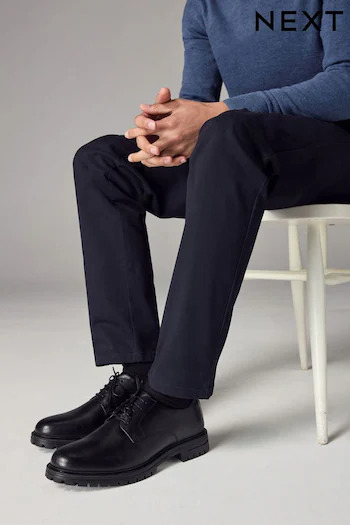
4. Timeless Watch
If you think a dress watch might be a bit much, getting a stainless-steel Dive or integrated bracelet watch will work with anything from casual wear to a suit. If you don't want to send much money, you can get something from Casio. Avoid any large, statement, or luxury watches. Why not luxury? You are trying to look down to earth right? A luxury watch is the pinnacle of pretention.
Notice how the watch just amps up the elegance, even when just wearing a t-shirt, not that we would wear one to work.

5. Be well groomed
This should go without saying. Remember when the standard for most young men was to be clean shaven daily? There was a reason for that. I typically have a short beard and classic comb over. The interesting thing is when I shave my beard off, I get compliments from older women but scared looks from young women. If you can grow a beard, keeping it well-groomed and having a classic haircut is the safest bet. Watch videos about having a hair style and beard style that matches your face shape, it has really helped me.
If you are dressing more casually but are well groomed, that could work. If you are not well groomed and you dress casually, you run the risk of looking sloppy and shaggy.
Bonus tip: Don't look overly groomed if you want to keep the down to earth vibe. An example of overly groomed would be getting a hair or beard style like Drake.
Moderately groomed:

Overly groomed:

If you stick with these 5 tips you will be miles above the average young male professional nowadays while still maintaining the strong level of approachability. Personally, I like it when style evolves, and I do think that being too rigid or refined can have it downsides.
This might be what you would look like if you were too refined and standing out a bit too much. Personally, I don't think there is anything wrong with dressing like this at work. I would prefer people dress like this rather than too casually. However, it might be a bit much.

If you follow these 5 tips, you may look more like this:

The difference is subtle, and both look good.
0 notes
Text
Current Real Estate Market Trends: What Buyers and Sellers Need to Know
The Real Estate market is not only vast but also ever-changing, it is crucial to keep up with it to ensure that you secure good deals. It all comes down to one thing– trends. Everything has to do with trends, be it fashion or real estate. In this comprehensive article, we will be getting to know the real estate market trends.
House Hunting Goes Digital:
Digital platforms have always existed; however, during and after the pandemic, the demand for these platforms increased across all businesses. The real estate sector is no exception. Individuals have been reserving their homes through a web marketplace in recent months. Other aspects of the house-buying process, such as a home tour, brokerage fees, rent amounts, deposits, lease agreements, and so on, have also gone digital. Furthermore, home loans are also available online. This has served as the foundation for buying and selling real estate developments in 2024 and will continue to do so for the rest of this year.
An Increase in Property Prices:
Increased demand and the market transitioning to a sellers’ market will eventually result in an increase in property prices. Home purchasers are aware of rising prices. Interestingly, some purchasers are willing to pay more than the asking price to complete the transaction.
Higher Interest Rates:
The era of low interest rates is over. The current geopolitical climate, combined with rising inflation, will put pressure on loan rates, which are likely to rise in the left year.
Shop-to-Offices in Commercial:
Shop-cum-offices, or SCOs, are a commercial real estate class that has experienced tremendous expansion in recent years. Gurugram is often regarded as the most visible and profitable site for shop-cum-offices in the National Capital Region. SCO plots have been made available for development and investment in different areas of Gurugram. As a result, a new age of commercially viable SCO plots has emerged. Fortunately, the SCO markets have grown phenomenally, and early investors’ capital has multiplied many times again. Investors in the SCO market might benefit from longer leases, better revenue, and continuous cash flow.
Transition to Suburban Living:
The COVID-19 epidemic has had a significant impact on people’s living preferences, prompting many to reconsider their housing demands. One notable tendency that has evolved is the move from urban to suburban living is remote work. On the list real estate trends 2024, it has been one of the most dominating trends. As remote work becomes more popular, many employees will no longer need to live close to their job. This flexibility enables them to seek out larger homes in suburban locations, where they may enjoy more room and lower costs. Desire for outside space: The pandemic emphasized the need of having access to open spaces. Suburban homes often have larger yards and are close to parks and nature, which appeals to both families and individuals.
Sustainable and Green Real Estate:
The rise of sustainable and green real estate indicates a heightened social awareness of environmental responsibility. When it comes to real estate, homebuyers are increasingly prioritizing eco-friendly amenities, energy efficiency, and sustainable building techniques. This trend not only corresponds with the global movement for environmental conservation, but it also represents a promising opportunity for investors. The desire for sustainable living spaces has prompted advancements in building materials, energy-efficient technologies, and sustainable design techniques. Investors in green real estate not only help the environment, but they also put themselves at the forefront of quickly changing real estate market trends.
To back up this claim, USGBC and Dodge Data & Analytics performed a study, which revealed that almost 30% of clients believe that sustainable and green buildings are the correct thing to do. As sustainable and green practices gain traction, the real estate industry is undergoing a revolutionary change toward more responsible and eco-conscious development, emphasizing the peaceful cohabitation of urban living with environmental sustainability.
Need for Health and Fitness Centers:
The expanding emphasis on health and well-being has become a major driver of real estate development, increasing demand for dedicated health and fitness facilities in both residential and commercial premises. It is a pretty recent, major real estate market update. This section investigates the emerging trend of prioritizing physical well-being in the built environment. From on-site gyms to wellness spaces, developers are responding to occupiers’ increasing desires for an integrated, health-promoting lifestyle. The demand for health and fitness services is more than just a luxury; it reflects a larger social shift toward holistic living.
Increased investment in Technology:
The epidemic has expedited the adoption of technology in the real estate market, making virtual property tours and digital transactions increasingly widespread. This trend is projected to continue in 2025, as technological advancements aid to streamline the home-buying and selling process. Modular dwellings and 3D printing are two examples of technological advances that could help address the difficulty of cheap housing. Therefore, the housing market in current times will be heavily impacted by economic, social, and technical forces.
Conclusion:
That concludes our list of major real estate trends happening right now. As more individuals move to the suburbs and try to buy a home, single-family housing prices are projected to remain high and supply limited. High mortgage rates may reduce demand for homes, with intergenerational living among the alternatives being considered. Meanwhile, the rental property market in large cities will continue to shrink, creating chances for real estate investors planning for a post-pandemic resurgence of metropolitan life. Well-placed retail outlets are already profiting from the green shoots of this recovery, but the implications for commercial office space are more long-term.
#real estate india#commercial real estate#residential real estate#buying property#realestateinvestment#property consultant#realestategurgaon
0 notes